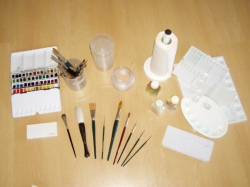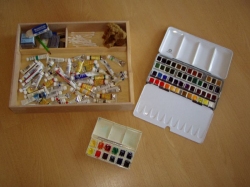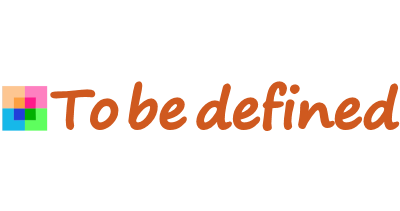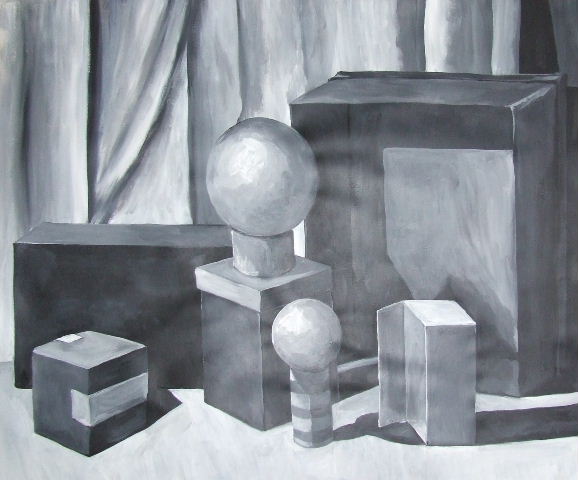Page 1 of 4
 When you're just starting with watercolor painting, you have a plethora of materials to choose from. There's a lot of variation in price and quality. And although the costs can be significant when you're just starting out, investing in better paint, a good brush, and suitable paper is definitely worth it. Paint, brushes, and paper of better quality are more enjoyable to work with and often yield a better result. When you're just starting with watercolor painting, you have a plethora of materials to choose from. There's a lot of variation in price and quality. And although the costs can be significant when you're just starting out, investing in better paint, a good brush, and suitable paper is definitely worth it. Paint, brushes, and paper of better quality are more enjoyable to work with and often yield a better result. |
 There are numerous colors of watercolor paint available. You don't need all of them. Over time, you'll develop your own palette of colors. In this article, you'll find a basic set of colors with which you can make a beautiful start. There are numerous colors of watercolor paint available. You don't need all of them. Over time, you'll develop your own palette of colors. In this article, you'll find a basic set of colors with which you can make a beautiful start.Watercolor paint is available in pans and tubes. You can use both interchangeably. Which one you choose is a matter of personal preference. Try both to see which you prefer. The colors mentioned in the basic palette are from the Talens-Rembrandt Artists Watercolour range. This is a fine quality paint, but more expensive than the Van Gogh range from Talens. If you have a limited budget, a replacement color from the Van Gogh range is listed next to the mentioned color. Of course, you can also use comparable colors from another brand for your basic palette. |
| The basic palette consists of 2 yellows, 2 reds, and 2 blues. If you want to know exactly why, also read the article on color theory. The colors you see may differ from the actual colors. This is partly due to your screen settings. If you're unsure about what you want to paint or if you have no preference, then it's best to choose a general color palette. |
For a general color palette, you need the following colors: |
(254 - Permanent lemon yellow) |
(268 - Azogeel Licht) If you want more variation in color compared to cadmium lemon yellow, you could also choose a Medium or Dark Cadmium yellow. |
(331 - Alizarin crimson) |
(370 - Permanent red light) |
(535 - Cerulean blue phthalo) |
(506 - Ultramarine deep) |
|
|
| This is the recommended basic palette with supplements. If you're not sure if you enjoy watercolor painting, start with the smallest package. Make sure to use paint from a good brand. In this case, you can start with both the cheaper student quality and the more expensive artist quality. Do not start with cheap, unbranded paint. These contain a lot of filler. Fillers are very cheap and allow the paint to be sold at a low price. The disadvantage of fillers is that the colors become dull and muddy when mixed. The cheap paints are only nice in color when unmixed. You can expand your color palette depending on the genre you want to paint. If you like painting flowers, you'll need a completely different color palette than someone who paints buildings or portraits. |



